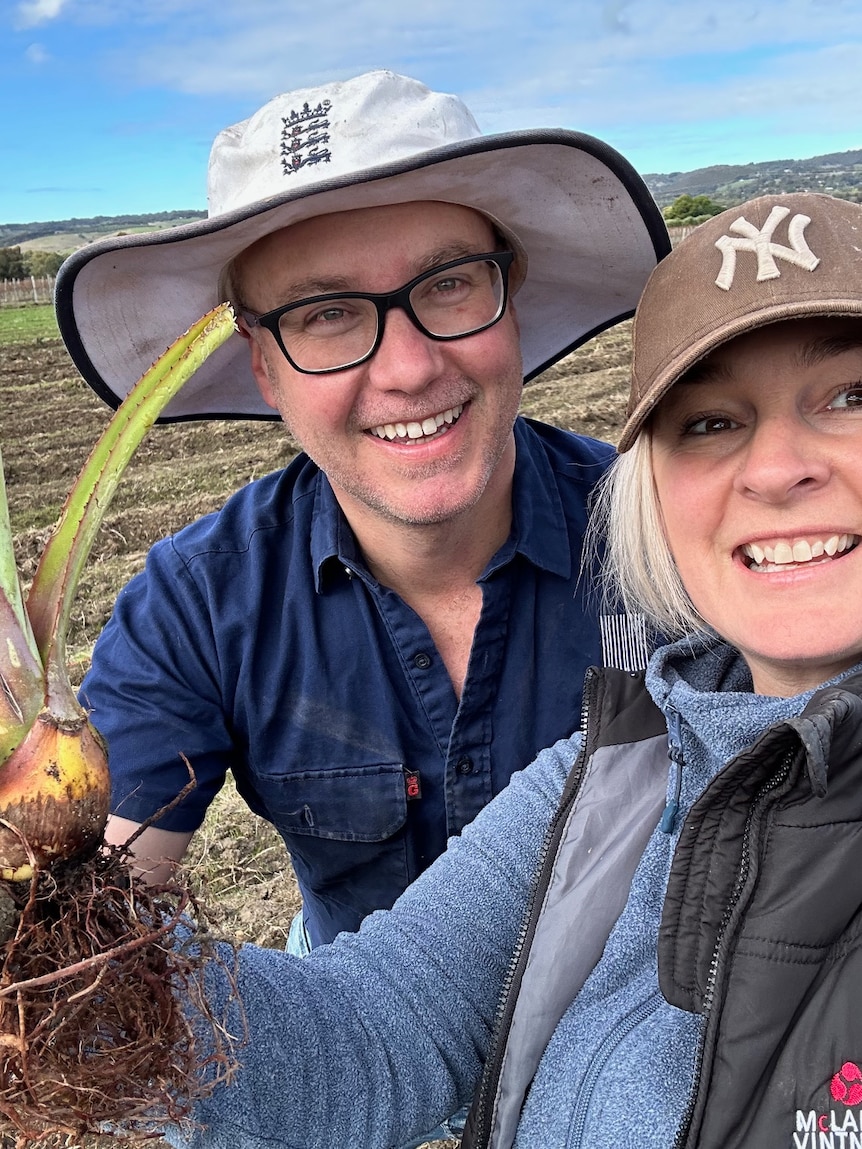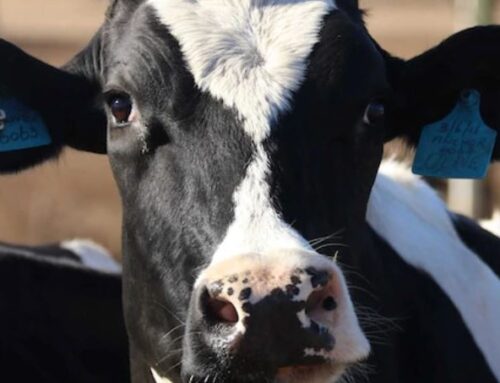With grape growers looking to diversify, one couple in South Australia’s McLaren Vale is hoping to move from wine to spirits — focusing on a spirit that is only commercially grown in one other place in Australia.
A block that was once used for wine grape vines is now home to a new planting of agave tequilana.
It is the first commercial planting in South Australia.
The project is a joint venture between Willunga grape growers Oli and Tara Madgett and plant-based technology group Vircura.
The Madgetts have been grappling with economic challenges in the wine industry for a decade.
Oli and Tara Madgett have decided to grow agave plants at Willunga. (Supplied: Oli Madgett)
“With the downturn in the wine industry we’ve been actually struggling to make things work economically for a couple of years now,” Mr Madgett said.
“Last year, we actually decided to start pulling out some of the vineyard and then we were on a search for what to do with the land once the vines had gone.”
By the end of this year, the number of vines on their property will have halved, with agave plants and malting barley filling every alternate row instead.
Rows of agave tequilana on the South Australian property. (Supplied: Oli Madgett)
In the long term, the couple is working towards creating an agave spirit.
“We’ve planted a couple of different varieties, but the main one is the variety called tequilana, which is the variety that does make tequila,” Mr Madgett said.
“But you can only call it tequila if it comes from a very specific area of Mexico, similar to champagne, so we will be looking to produce agave spirit.”
Agave tequilana thrives in the desert and supplies way more than cocktail mixers. (Wikimedia: Stan Shebs)
Agave as an emerging crop
Vircura chief scientific officer and University of Adelaide’s emerging crop researcher, Rachel Burton, said there was only one commercial agave tequilana farm in Australia, located between Bowen and Airlie Beach in Queensland.
She said she was hopeful the plant would take off in SA.
“It’s quite uncommon to see agave grown, there’s a farm that’s quite large up in Queensland, but Queensland is nice and warm and quite wet, and the agave likes it up there,” she said.
“So this is a bit of an adventure.
“Everywhere we go, we tell people about agave and how useful it is, it’s multi-functional and we hope can be a multi-income stream.”
The succulent is tough and prickly and can grow to large sizes.
Ms Burton said its adaptability makes it an attractive candidate for growers looking to diversify.
“They’re very resilient plants, they will grow in all sorts of places, and they are determined to survive,” she said.
The plant also has several uses beyond becoming an agave spirit.
“It’s basically a sugar production plant, the sugar can go into ethanol, which we can drink as the spirit, or it can go into bio-ethanol that can be then used for sustainable aviation fuel,” Ms Burton said.
“It’s also fire resistant and can act as a natural fence in the landscape.
“Cattle and sheep can eat it as a fodder and the fibres in it can be used in a number of different building materials.”
Agave plants in Mexico. (Supplied: MSF Sugar)
Navigating SA’s conditions
While Queensland has the ideal conditions for growing agave, prospective South Australian growers will have to consider several factors for it to thrive down south.
“Things like soil, climate and rainfall, but the key thing down in South Australia is the frost risk … it’s a lot colder here and the tequilana doesn’t like frost,” Ms Burton said.
“If we’re going to succeed in some areas across Australia, we’re going to need lines that are cold tolerant.”
Emerging crop researcher Rachel Burton shows an agave plant ready to be planted. (Supplied: Oli Madgett)
The plants have already faced cold conditions after they were hit with frost in early winter.
“It was pretty much the first frost we’ve ever experienced in the decade of being here, our vineyard was chosen for the agave because we are so close to the coast,” Mr Madgett said of his new crop.
“It’s a Mediterranean climate, and we really just do not get frosts.”
Some of the agave plants that were hit by frost are recovering well. (Supplied: Oli Madgett)
A little wait for the agave spirit
Within four years, the plants could become big enough to make spirits.
“It’s going to be a while, but some of the other species that we’ve got growing may be a lot quicker, we don’t know … it’s a real experiment, because they’ve never been grown here before,” Ms Burton said.
“So it’s kind of a world first.
“Everybody thinks I’m a nutter because I’ve been raving on about agave for years, and to finally, actually see it in the ground and people really realising what a versatile and useful crop it can be for Australia is very exciting.”





